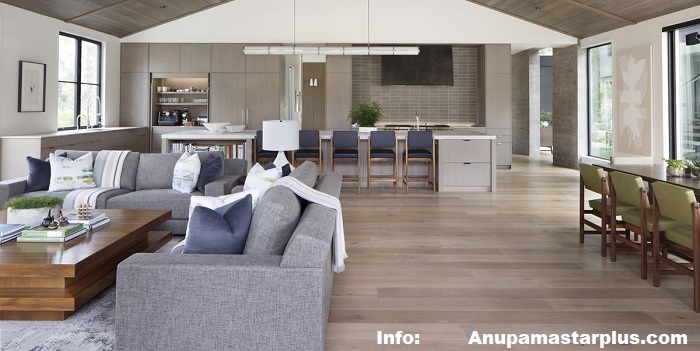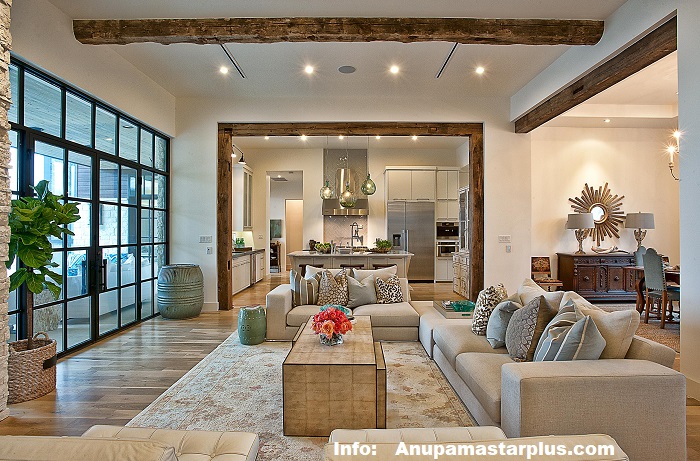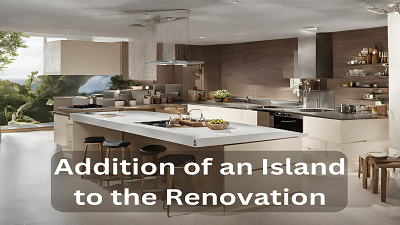Living Renovation
In the realm of modern interior design, open-concept living has become increasingly popular. Gone are the days of compartmentalized rooms separated by walls; instead, homeowners are opting for spacious, fluid layouts that promote connectivity and flow. This article will delve into the intricacies of open-concept living renovations, exploring the benefits, considerations, design tips, renovation process, cost considerations, and common challenges associated with this transformative endeavor.
Introduction to Open Concept Living
Open concept living refers to a design philosophy that removes barriers between different functional areas within a home, typically combining the kitchen, living room, and dining area into one expansive space. By eliminating walls and partitions, open-concept living creates an unobstructed flow that enhances both visual and physical connectivity.

Benefits of Open Concept Living
Increased Natural Light
One of the primary advantages of open-concept living is the influx of natural light. Without walls blocking the passage of sunlight, spaces feel brighter and more inviting. This not only creates a welcoming ambiance but also reduces the need for artificial lighting during the day, leading to potential energy savings.
Enhanced Social Interaction
Another significant benefit is the promotion of social interaction. With no barriers to impede communication, individuals can seamlessly interact with one another regardless of their location within the space. This fosters a sense of togetherness and facilitates bonding during everyday activities such as cooking, dining, or entertaining guests.
Versatile Space
Additionally, open-concept living offers unparalleled versatility. The absence of walls allows homeowners to configure the space according to their evolving needs and preferences. Whether hosting large gatherings or enjoying quiet evenings with family, the layout can be easily adapted to accommodate various activities and occasions.
Considerations Before Renovating
Before embarking on an open-concept living renovation, it’s essential to consider several factors to ensure a successful outcome.
Structural Implications
First and foremost, assess the structural feasibility of your home’s layout. Removing load-bearing walls requires careful planning and professional expertise to avoid compromising the integrity of the structure. Consulting with a structural engineer is crucial to determining the feasibility of the renovation and identifying any necessary reinforcements.
Privacy Concerns
While open-concept living promotes connectivity, it may also raise concerns regarding privacy. Evaluate how the removal of walls will impact the privacy of individual spaces, particularly bedrooms and bathrooms. Consider incorporating alternative solutions such as sliding doors, curtains, or partition walls to maintain privacy without sacrificing the open feel of the layout.
Noise Management
Another consideration is noise management. Without walls to absorb sound, noise levels can escalate, potentially disrupting activities and conversations. Implementing sound-absorbing materials such as rugs, curtains, or acoustic panels can help mitigate noise and create a more comfortable living environment.
Design Tips for Open-concept Living
Designing an open-concept living space requires careful attention to detail to ensure harmony and functionality.
Cohesive Color Palette
Start by establishing a cohesive color palette that unifies the different areas within the space. Opt for neutral tones or complementary hues to create a seamless transition between the kitchen, living room, and dining area. This will enhance visual continuity and make the space feel more expansive.
Strategic Furniture Placement
Consider the layout of furniture to delineate distinct zones within the open space. Arrange furniture strategically to define areas for cooking, dining, and relaxation while maintaining an open flow between them. Use furniture pieces such as sofas, area rugs, or bookshelves to create visual boundaries without obstructing the overall openness of the space.
Zoning with Area Rugs or Lighting
Use area rugs or lighting fixtures to delineate different functional zones within the open space. Placing an area rug under the dining table or in the seating area can visually anchor each zone and create a sense of coziness. Similarly, pendant lights or recessed lighting can be used to highlight specific areas and provide task lighting where needed.
Renovation Process
The renovation process for open-concept living typically follows several key steps to ensure a seamless transition from concept to completion.
Consultation with Design Professionals
Begin by consulting with design professionals, such as interior designers or architects, to discuss your vision and goals for the renovation. They can provide valuable insights and recommendations based on their expertise, helping you refine your ideas and develop a comprehensive plan for the project.
Obtaining Permits
Before commencing any structural changes, ensure that you obtain the necessary permits from your local building authority. Compliance with building codes and regulations is essential to ensure the safety and legality of the renovation. Work with your design professionals to prepare and submit the required permit applications, including detailed plans and specifications.

Execution and Timeline
Once permits are secured, the renovation can proceed according to the agreed-upon timeline. Depending on the scope of the project, this may involve demolition of existing walls, installation of structural reinforcements, and finishing touches such as flooring, cabinetry, and lighting fixtures. Effective communication with contractors and regular site visits will help ensure that the renovation stays on track and meets your expectations.
Cost Considerations
Before embarking on an open concept living renovation, it’s essential to consider the associated costs and budget accordingly.
Materials and Labor
The cost of materials and labor will vary depending on factors such as the size of the space, the complexity of the renovation, and the quality of materials chosen. Obtain multiple quotes from reputable contractors to compare prices and ensure that you’re getting a fair deal. Remember to budget for unforeseen expenses that may arise during the renovation process.
Potential Additional Expenses
In addition to the direct costs of renovation, consider potential additional expenses such as permits, design fees, and furnishings. Factor these into your budget to avoid any financial surprises down the line. It’s also advisable to set aside a contingency fund to cover unexpected costs or changes to the project scope.
Case Studies: Successful Open Concept Living Renovations
To provide real-world examples of open-concept living renovations, this section will showcase case studies of successful projects, highlighting the design choices, challenges encountered, and lessons learned.
Common Challenges and Solutions
Despite its many benefits, open-concept living renovations can present challenges that require creative solutions.
Storage Solutions
One common challenge is the lack of storage space in open concept layouts. Explore innovative storage solutions such as built-in cabinetry, multifunctional furniture, or hidden storage compartments to maximize



